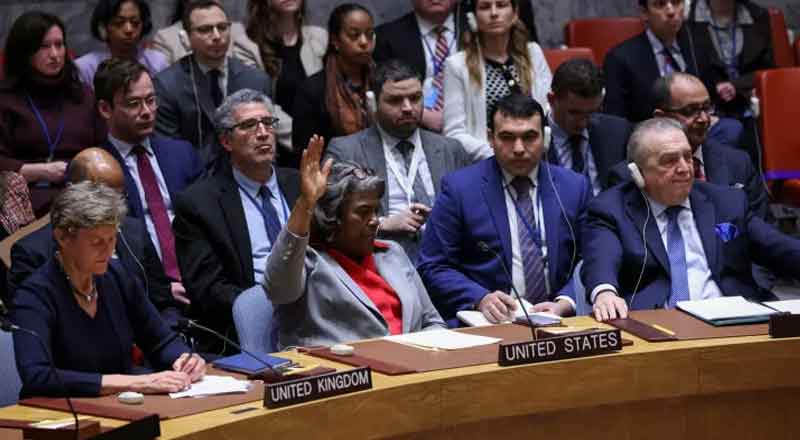- The UN Security Council has taken a decisive step towards ending the Israel-Hamas conflict by overwhelmingly approving a resolution endorsing a ceasefire plan.
- The proposal was outlined by US President Joe Biden and the resolution was adopted in a 14-1 vote in its favour.
- US Ambassador to the UN, Linda Thomas-Greenfield, hailed the vote as a pivotal moment in the quest for peace, declaring, “Today we voted for peace.”
- Hamas’ positive response to the adoption of the US-drafted resolution reflects a willingness to engage with international mediators and explore avenues for de-escalation.
- Subsequent phases will focus on negotiations for a permanent cessation of hostilities and the implementation of a comprehensive reconstruction plan for Gaza.
- Israel’s representatives at the UN reaffirmed their commitment to core objectives, including the liberation of hostages, dismantling Hamas’ military infrastructure, and safeguarding Israel from future threats.
In a landmark decision, the United Nations Security Council has taken a decisive step towards ending the protracted Israel-Hamas conflict by overwhelmingly approving a resolution endorsing a ceasefire plan proposed by US President Joe Biden. The resolution, adopted in a 14-1 vote, underscores the international community’s collective commitment to restoring peace in the embattled Gaza Strip.
While the majority of Security Council members rallied in support of the resolution, Russia’s decision to abstain signals lingering reservations about the plan’s efficacy and clarity. Nevertheless, the resounding endorsement of the resolution underscores the urgency of halting the eight-month-long conflict and initiating a pathway towards reconciliation.
US Ambassador to the UN, Linda Thomas-Greenfield, hailed the vote as a pivotal moment in the quest for peace, declaring, “Today we voted for peace.” The resolution’s emphasis on the full implementation of the ceasefire plan without delay or condition underscores the imperative of adherence to its terms by both Israel and Hamas.
Hamas’ positive response to the adoption of the US-drafted resolution reflects a willingness to engage with international mediators and explore avenues for de-escalation. The phased approach outlined in the ceasefire proposal aims to facilitate a gradual transition towards peace, beginning with a six-week ceasefire period characterized by Israeli withdrawal from Gaza population centers and the exchange of hostages.
Subsequent phases will focus on negotiations for a permanent cessation of hostilities and the implementation of a comprehensive reconstruction plan for Gaza. However, concerns raised by Russia regarding the resolution’s lack of specificity highlight the complexities of navigating the peace process amidst entrenched grievances and mistrust.
Israel’s representatives at the UN reaffirmed their commitment to core objectives, including the liberation of hostages, dismantling Hamas’ military infrastructure, and safeguarding Israel from future threats. Prime Minister Benjamin Netanyahu’s cautious approach underscores the delicate balance between pursuing peace and ensuring Israel’s security interests.
US Secretary of State Antony Blinken’s diplomatic efforts in Israel underscore the importance of garnering support for postwar reconstruction and pressuring Hamas to embrace the ceasefire proposal. While Netanyahu remains skeptical about the plan’s viability, international mediators continue to navigate the intricacies of negotiations with a sense of urgency.
Despite the resolution’s endorsement, the road to lasting peace remains fraught with challenges. Hamas’ insistence on a permanent ceasefire and Israeli withdrawal from Gaza underscores the deep-seated grievances fueling the conflict. Moreover, the staggering toll of casualties on both sides serves as a sobering reminder of the human cost of prolonged violence.
As global efforts intensify to broker peace in the region, the resolution represents a beacon of hope amidst the enduring turmoil of the Israel-Hamas conflict. Yet, the true test lies in translating diplomatic commitments into tangible actions that address the root causes of the conflict and pave the way for a sustainable peace in the region. Only through concerted international cooperation and unwavering commitment to dialogue can the aspirations of peace and stability be realized for the people of Gaza and Israel alike.
(With inputs from agencies)





